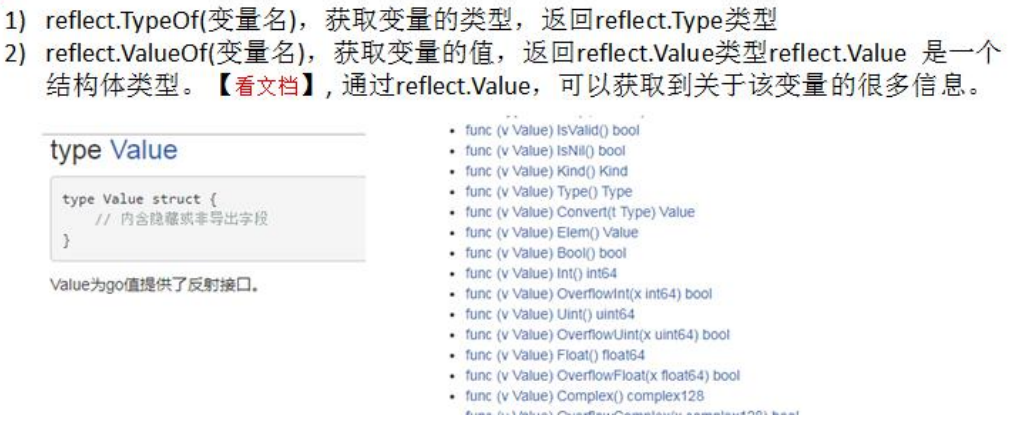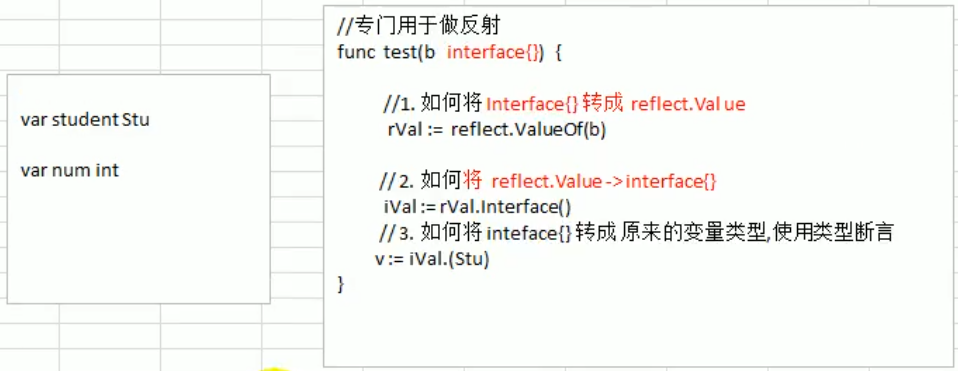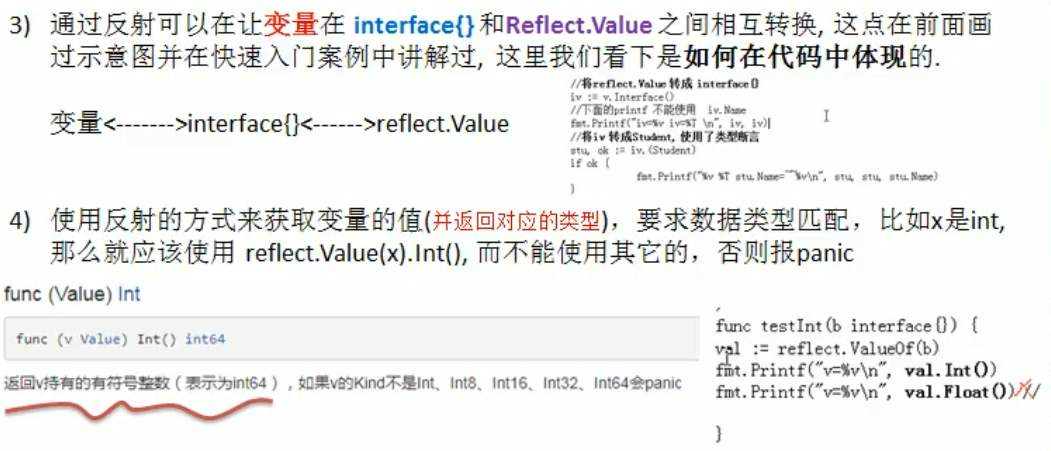基本介绍
- 反射可以在运行时动态的获取变量的各种信息,比如变量的类型(type)、类别(kind)
- 如果是结构体变量,还可以获取到结构体本身的信息,包括结构体的字段、方法
- 通过反射,可以修改变量的值,可以调用关联的方法
- 使用反射,需要import(”reflect”)
反射

变量、interface{}、reflect.Value是可以相互转换的,这点在实际开发中,会经常使用到。

细节说明


代码案例
package AdvancedLearnimport ( "fmt" "reflect")type Student struct{ Name string Age int}// 专门演示反射func reflectDemoInt(b interface{}){ // 通过反射 获取传入变量的 type , kind , value rTyp := reflect.TypeOf(b) fmt.Println(rTyp) rVal := reflect.ValueOf(b) //不能直接参与计算 fmt.Println(2+rVal.Int()) //转值计算 fmt.Println(rVal) //将rVal转成 interface{} => 再转化为对应类型 iV := rVal.Interface() num2 := iV.(int) fmt.Println(num2)}func reflectDemoStruct(b interface{}){ // 通过反射 获取传入变量的 type , kind , value rTyp := reflect.TypeOf(b) fmt.Println("rType =",rTyp) // rType = AdvancedLearn.Student rVal := reflect.ValueOf(b) //不能直接参与计算 fmt.Println("rValue =",rVal) // rValue = {BigHead 25} //将rVal转成 interface{} => 再转化为对应类型 iV := rVal.Interface() fmt.Println(iV) // iV.Name 此时不可行 stu2 , ok := iV.(Student) if ok{ fmt.Println(stu2.Name,stu2.Age) }}func TestReflect() { // 基本数据类型 num的反射操作 //var num int = 100 //reflectDemoInt(num) // type = int(打印值,实际为reflect.type) // value = 100(打印值,实际为reflect.value) stu := Student{"BigHead",25} reflectDemoStruct(stu)}





